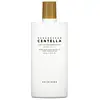What's inside
What's inside
 Key Ingredients
Key Ingredients

 Benefits
Benefits

 Concerns
Concerns

 Ingredients Side-by-side
Ingredients Side-by-side

Water
Skin ConditioningButylene Glycol
HumectantDibutyl Adipate
EmollientDiethylamino Hydroxybenzoyl Hexyl Benzoate
UV FilterBis-Ethylhexyloxyphenol Methoxyphenyl Triazine
Skin ConditioningAlcohol
AntimicrobialAcrylates Copolymer
Butyloctyl Salicylate
Skin ConditioningC12-15 Alkyl Benzoate
AntimicrobialEthylhexyl Triazone
UV AbsorberPhenethyl Benzoate
EmollientArbutin
Antioxidant1,2-Hexanediol
Skin ConditioningSilica
AbrasiveMethylpropanediol
SolventIsoamyl P-Methoxycinnamate
UV AbsorberPolysilicone-15
UV FilterPolymethylsilsesquioxane
Panax Ginseng Root Extract
EmollientPentylene Glycol
Skin ConditioningDibutyl Ethylhexanoyl Glutamide
Skin ConditioningDibutyl Lauroyl Glutamide
Skin ConditioningC30-45 Alkyldimethylsilyl Polypropylsilsesquioxane
Ammonium Acryloyldimethyltaurate/Vp Copolymer
Sodium Acrylates Crosspolymer-2
AbsorbentSodium Polyacryloyldimethyl Taurate
Emulsion StabilisingEthyl Hexanediol
SolventHydroxyacetophenone
AntioxidantPanax Ginseng Berry Extract
Skin ConditioningPanax Ginseng Extract
AntioxidantPanax Ginseng Leaf/Stem Extract
Skin ConditioningAdenosine
Skin ConditioningXanthan Gum
EmulsifyingDisodium EDTA
Ethylhexylglycerin
Skin ConditioningGlycerin
HumectantTocopherol
AntioxidantWater, Butylene Glycol, Dibutyl Adipate, Diethylamino Hydroxybenzoyl Hexyl Benzoate, Bis-Ethylhexyloxyphenol Methoxyphenyl Triazine, Alcohol, Acrylates Copolymer, Butyloctyl Salicylate, C12-15 Alkyl Benzoate, Ethylhexyl Triazone, Phenethyl Benzoate, Arbutin, 1,2-Hexanediol, Silica, Methylpropanediol, Isoamyl P-Methoxycinnamate, Polysilicone-15, Polymethylsilsesquioxane, Panax Ginseng Root Extract, Pentylene Glycol, Dibutyl Ethylhexanoyl Glutamide, Dibutyl Lauroyl Glutamide, C30-45 Alkyldimethylsilyl Polypropylsilsesquioxane, Ammonium Acryloyldimethyltaurate/Vp Copolymer, Sodium Acrylates Crosspolymer-2, Sodium Polyacryloyldimethyl Taurate, Ethyl Hexanediol, Hydroxyacetophenone, Panax Ginseng Berry Extract, Panax Ginseng Extract, Panax Ginseng Leaf/Stem Extract, Adenosine, Xanthan Gum, Disodium EDTA, Ethylhexylglycerin, Glycerin, Tocopherol
Centella Asiatica Extract 35.8%
CleansingCyclopentasiloxane
EmollientZinc Oxide
Cosmetic ColorantButyloctyl Salicylate
Skin ConditioningTitanium Dioxide
Cosmetic ColorantPropanediol
SolventBenzotriazolyl Dodecyl P-Cresol
UV AbsorberCoptis Chinensis Root Extract
AntioxidantPEG-10 Dimethicone
Skin ConditioningNiacinamide
SmoothingDisteardimonium Hectorite
StabilisingButylene Glycol
HumectantMagnesium Sulfate
1,2-Hexanediol
Skin ConditioningCaprylic/Capric Glycerides
EmollientDimethicone
EmollientVp/Hexadecene Copolymer
Polymethylsilsesquioxane
Aluminum Hydroxide
EmollientStearic Acid
CleansingSorbitan Sesquioleate
EmulsifyingTriethoxycaprylylsilane
Dimethicone Crosspolymer
Emulsion StabilisingDimethicone/Vinyl Dimethicone Crosspolymer
Skin ConditioningDextrin
AbsorbentTheobroma Cacao Extract
Skin ConditioningPelargonium Graveolens Flower Oil
MaskingWater
Skin ConditioningCitrus Aurantium Bergamia Fruit Oil
MaskingBetaine
HumectantScutellaria Baicalensis Root Extract
AstringentPolygonum Cuspidatum Root Extract
AntioxidantGlycyrrhiza Glabra Root Extract
BleachingCamellia Sinensis Leaf Extract
AntimicrobialSodium Hyaluronate
HumectantRosmarinus Officinalis Leaf Extract
AntimicrobialChamomilla Recutita Flower Extract
MaskingRosa Damascena Flower Oil
MaskingPentylene Glycol
Skin ConditioningMadecassoside
AntioxidantCitronellol
PerfumingGeraniol
PerfumingLinalool
PerfumingCentella Asiatica Extract 35.8%, Cyclopentasiloxane, Zinc Oxide, Butyloctyl Salicylate, Titanium Dioxide, Propanediol, Benzotriazolyl Dodecyl P-Cresol, Coptis Chinensis Root Extract, PEG-10 Dimethicone, Niacinamide, Disteardimonium Hectorite, Butylene Glycol, Magnesium Sulfate, 1,2-Hexanediol, Caprylic/Capric Glycerides, Dimethicone, Vp/Hexadecene Copolymer, Polymethylsilsesquioxane, Aluminum Hydroxide, Stearic Acid, Sorbitan Sesquioleate, Triethoxycaprylylsilane, Dimethicone Crosspolymer, Dimethicone/Vinyl Dimethicone Crosspolymer, Dextrin, Theobroma Cacao Extract, Pelargonium Graveolens Flower Oil, Water, Citrus Aurantium Bergamia Fruit Oil, Betaine, Scutellaria Baicalensis Root Extract, Polygonum Cuspidatum Root Extract, Glycyrrhiza Glabra Root Extract, Camellia Sinensis Leaf Extract, Sodium Hyaluronate, Rosmarinus Officinalis Leaf Extract, Chamomilla Recutita Flower Extract, Rosa Damascena Flower Oil, Pentylene Glycol, Madecassoside, Citronellol, Geraniol, Linalool
 Reviews
Reviews

Ingredients Explained
These ingredients are found in both products.
Ingredients higher up in an ingredient list are typically present in a larger amount.
1,2-Hexanediol is a synthetic liquid and another multi-functional powerhouse.
It is a:
- Humectant, drawing moisture into the skin
- Emollient, helping to soften skin
- Solvent, dispersing and stabilizing formulas
- Preservative booster, enhancing the antimicrobial activity of other preservatives
Butylene Glycol (or BG) is used within cosmetic products for a few different reasons:
Overall, Butylene Glycol is a safe and well-rounded ingredient that works well with other ingredients.
Though this ingredient works well with most skin types, some people with sensitive skin may experience a reaction such as allergic rashes, closed comedones, or itchiness.
Learn more about Butylene GlycolButyloctyl Salicylate is a chemical UV filter structurally similar to octisalate. It is a photostabilizer, SPF booster, emollient and solvent. This ingredient helps evenly spread out ingredients.
According to a manufacturer, it is suitable for pairing with micro Titanium Dioxide, Zinc Oxide, and pigments.
Photostabilizers help stabilize UV-filters and prevents them from degrading quickly.
Learn more about Butyloctyl SalicylatePentylene glycol is typically used within a product to thicken it. It also adds a smooth, soft, and moisturizing feel to the product. It is naturally found in plants such as sugar beets.
The hydrophilic trait of Pentylene Glycol makes it a humectant. As a humectant, Pentylene Glycol helps draw moisture from the air to your skin. This can help keep your skin hydrated.
This property also makes Pentylene Glycol a great texture enhancer. It can also help thicken or stabilize a product.
Pentylene Glycol also acts as a mild preservative and helps to keep a product microbe-free.
Some people may experience mild eye and skin irritation from Pentylene Glycol. We always recommend speaking with a professional about using this ingredient in your routine.
Pentylene Glycol has a low molecular weight and is part of the 1,2-glycol family.
Learn more about Pentylene GlycolPolymethylsilsesquioxane is a silicone used as a film forming agent.
When applied to the skin, this ingredient creates an invisible film on the surface. This film still allows oxygen to pass through, but prevents moisture from escaping. This can help condition and hydrate the skin. It also leaves a silky feel when applied.
Polymethylsilsesquioxane has not been shown to clog pores. It has been deemed safe to use up to 55%, but most cosmetics use much less.
If you have concerns about using this ingredient, we recommend speaking with a professional.
Learn more about PolymethylsilsesquioxaneWater. It's the most common cosmetic ingredient of all. You'll usually see it at the top of ingredient lists, meaning that it makes up the largest part of the product.
So why is it so popular? Water most often acts as a solvent - this means that it helps dissolve other ingredients into the formulation.
You'll also recognize water as that liquid we all need to stay alive. If you see this, drink a glass of water. Stay hydrated!
Learn more about Water